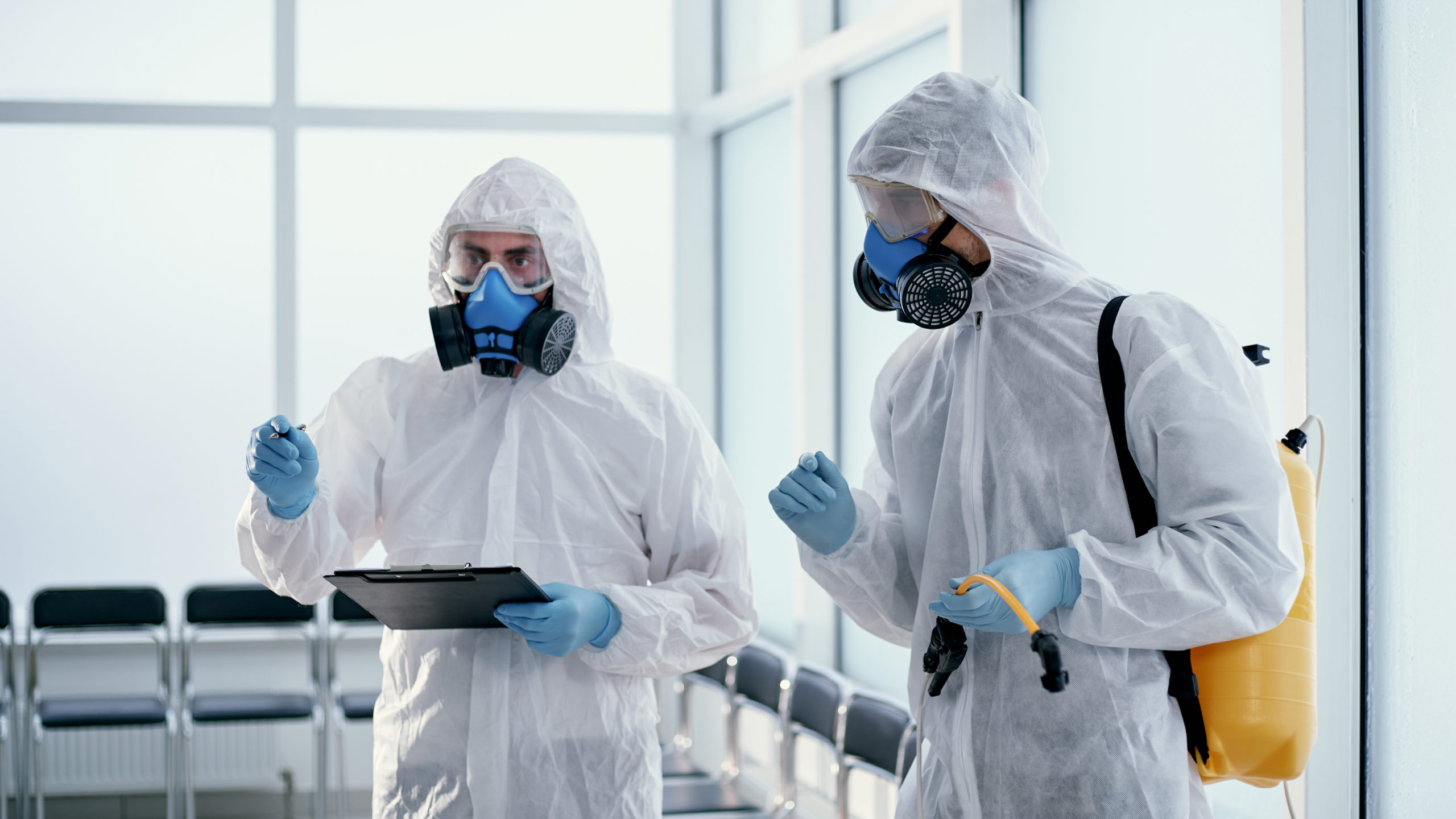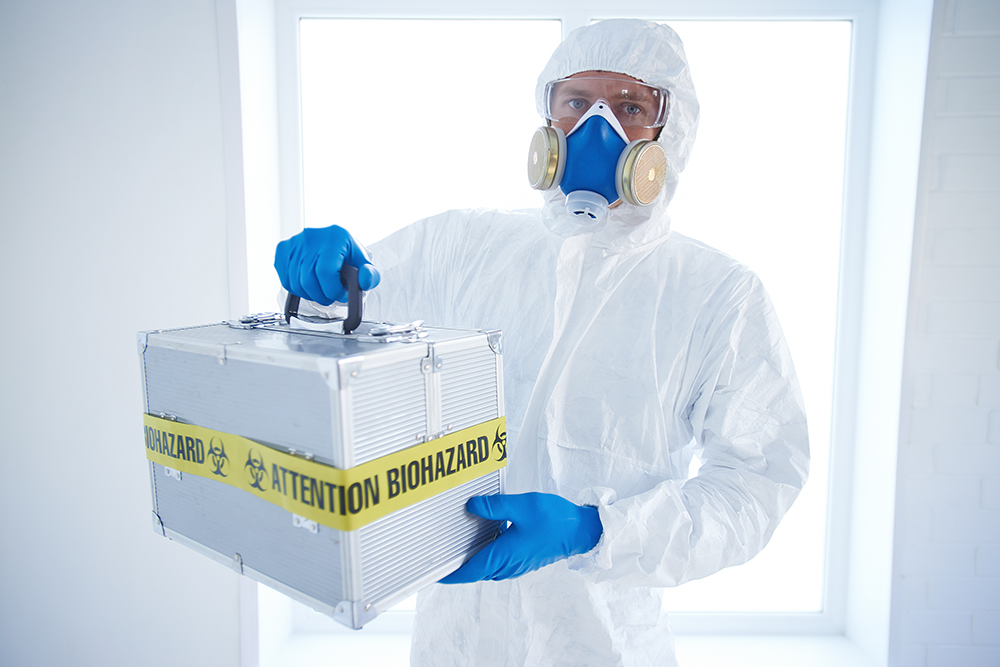Sewage Cleanup Providers: Fast and Safe Remediation of Contaminated Areas
Sewage Cleanup Providers: Fast and Safe Remediation of Contaminated Areas
Blog Article
Professional Biohazard Cleansing and Decontamination for Blood, Bodily Fluids, and Hazardous Materials
The potential health and wellness dangers associated with direct exposure to biohazards highlight the important requirement for careful handling and extensive cleanup. As we browse the detailed landscape of biohazard cleanup, comprehending the subtleties of regulations, conformity, and the customized tools at play comes to be important in ensuring a comprehensive and safe decontamination procedure.
Health Threats of Biohazard Direct Exposure
Direct exposure to biohazards postures substantial health and wellness dangers that can lead to extreme effects for people and neighborhoods alike. Biohazards encompass a variety of organic materials, consisting of blood, bodily liquids, mold, microorganisms, viruses, and other possibly contagious products. When people come right into call with these biohazards, whether with mishaps, improper handling, or environmental exposure, they face the danger of having major ailments or conditions.
Among the key health and wellness dangers related to biohazard exposure is the transmission of infectious illness. Bloodborne pathogens such as HIV, liver disease B and C, and various germs can be present in biohazardous products, posturing a direct danger to human wellness. Inhaling air-borne biohazards like mold spores or entering into call with contaminated surfaces can likewise bring about respiratory system problems, allergic reactions, and other unfavorable wellness results.
Additionally, biohazard exposure can have long-lasting health effects, with some diseases manifesting years after the initial get in touch with (Blood Cleanup). For that reason, it is critical to focus on proper biohazard cleaning and decontamination to minimize these wellness risks and ensure the safety and security of individuals and communities

Specialized Training for Biohazard Cleanup
When it comes to taking care of biohazard clean-up successfully and securely, specialized training plays a basic duty in guaranteeing proper decontamination treatments are followed. Biohazard cleanup needs details knowledge and skills to efficiently mitigate threats associated with bloodborne pathogens, physical fluids, and hazardous products. Professionals educated in biohazard cleaning undergo extensive direction on just how to safely manage, remove, and get rid of biohazardous materials to avoid contamination and direct exposure.
Specialized training for biohazard clean-up covers a series of vital topics, including proper personal protective devices (PPE) use, bloodborne pathogen understanding, decontamination strategies, and hazardous waste disposal procedures. Individuals learnt biohazard cleanup are equipped with the required knowledge to examine contamination levels, recognize prospective risks, and carry out appropriate cleaning procedures in compliance with regulatory requirements.
Continual training and education and learning are critical in the field of biohazard cleanup to stay upgraded on the most recent decontamination modern technologies, safety and security protocols, and guidelines. By investing in specialized training, biohazard cleanup experts can properly react to emergency cleanup situations and protect both public wellness and the setting.
Importance of Appropriate Purification Methods
Using proper decontamination strategies is essential in biohazard clean-up to effectively decrease and eliminate dangerous materials health and wellness dangers. Effective purification not only makes sure the elimination of noticeable traces of blood, physical liquids, and other biohazards but additionally targets unseen virus that may pose serious health dangers otherwise correctly removed. By following rigorous decontamination protocols, educated experts can considerably decrease the threat of exposure to harmful bacteria, infections, and bacteria that might lead to illness or infections.
Correct decontamination techniques entail the use of customized equipment and anti-bacterials that are especially created to reduce the effects of biohazards successfully. Comprehensive cleaning and sanitation of polluted locations are crucial to stop the spread of microorganisms and make sure a secure environment for passengers. Furthermore, the appropriate disposal of biohazardous waste complying with decontamination procedures is essential in preventing contamination of various other surfaces or individuals.

Devices and Tools for Safe Cleaning
The correct tools and tools play an important duty in making certain the risk-free and efficient clean-up of biohazardous products. When dealing with blood, bodily fluids, or hazardous products, biohazard cleansing experts depend on specialized equipment to lessen direct exposure threats and extensively sanitize the damaged location. Personal protective equipment (PPE) such as gloves, coveralls, masks, and goggles are important to secure versus straight call with potentially infectious products. Additionally, biohazard cleansing kits having disinfectants, absorptive products, and biohazard bags are used to securely have and dispose of polluted products. Blood Cleanup.
Advanced cleansing devices like hospital-grade anti-bacterials, HEPA-filtered vacuum cleaners, and fogging machines are utilized to sterilize surface areas and eliminate biohazards efficiently. Specialized devices such as sharps containers and hop over to these guys biohazard garbage disposal containers are used to safely handle sharp objects and biohazardous waste materials. By making use of the appropriate equipment and devices, biohazard cleansing experts can make sure a detailed clean-up procedure that prioritizes security and minimizes health dangers for both employees and owners of the damaged room.
Laws and Conformity in Biohazard Cleaning
Proper adherence to regulations and compliance requirements is vital in biohazard cleaning to ensure the security of both employees and the setting. Federal government firms such as OSHA (Occupational Safety And Security and Health And Wellness Management) and the EPA (Epa) have actually developed particular standards for biohazard cleaning treatments to lessen health risks and ecological contamination. These laws cover a series of facets including the handling, transport, why not look here and disposal of biohazardous products, as well as the necessary training and safety tools needed for personnel associated with the cleaning process.
Biohazard cleaning companies should remain updated with these regulations to assure that their procedures satisfy the required safety criteria. Failing to adhere to these laws can cause serious consequences, consisting of penalties, lawful activity, and jeopardizing the health of people and the setting. By adhering to rigid guidelines and conformity procedures, biohazard cleaning firms can efficiently mitigate risks and make sure a thorough and safe cleaning procedure for all parties included.
Verdict
To conclude, biohazard cleaning and decontamination require specialized training, appropriate strategies, and adherence to guidelines. Direct exposure to blood, bodily fluids, and unsafe materials postures significant health threats, making it crucial to use the best tools and devices for safe cleanup. By adhering to stringent procedures and guidelines, specialists can efficiently reduce the threats associated with biohazard exposure and make sure the security of both themselves and others.
As we browse the complex landscape of biohazard cleaning, recognizing the nuances of regulations, compliance, and the customized devices at play ends up being vital in guaranteeing a risk-free and complete decontamination process. (Blood Cleanup)
When it comes to dealing with biohazard cleaning successfully and securely, specialized training plays a basic Learn More Here function in making sure proper purification procedures are complied with.Utilizing appropriate purification strategies is important in biohazard cleanup to efficiently remove dangerous materials and reduce health and wellness risks. Furthermore, biohazard cleansing sets containing anti-bacterials, absorptive materials, and biohazard bags are utilized to securely include and dispose of contaminated products.
Federal government firms such as OSHA (Occupational Safety And Security and Wellness Management) and the EPA (Environmental Protection Firm) have established particular standards for biohazard clean-up treatments to reduce health risks and environmental contamination.
Report this page